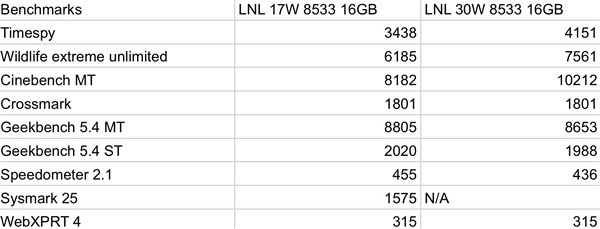In the past two years, both AMD and Intel have made significant strides in integrated graphics, with Intel's Core Ultra 100 series featuring the new Xe architecture and AMD's Ryzen 8040 series using the new RDNA3 architecture. The next generation, including Intel's Lunar Lake Core Ultra 200 series and AMD's Strix Point Ryzen AI 300 series, will upgrade to Xe2 and RDNA3.5, respectively.
The Core Ultra 200V series comes in two variants: the ARC 140V with 8 Xe cores and the ARC 130V with 7 Xe cores, both of which share the same architecture as the upcoming ARC B series of discrete graphics cards.

According to the latest leaks, the Core Ultra 200V integrated with LPDDR5X-8533 high-frequency memory achieves a 3DMark Time Spy score of up to 4,151 under a 30W power limit and 3,438 at 17W. This performance is very close to the AMD Ryzen AI 9 HX 370's 890M integrated graphics, which has a 54W power limit, with only about a 2% difference in both low and high power scenarios.
When compared to discrete graphics cards, at 30W, the Core Ultra 200V is almost 10% ahead of the 45W RTX 2050 and is roughly 7.5% behind the 50W RTX 3050.

However, it is important to note that the Core Ultra 200V integrates packaged memory with 16/32GB capacity and a frequency of up to 8533MHz, offering an advantage in terms of frequency and latency compared to AMD’s 7500MHz. This integrated memory does result in 2-3W higher power consumption, and performance is highly sensitive to power release.
Of course, the 3DMark score provides only a theoretical performance indicator; real-world gaming and application performance will depend heavily on optimization.
